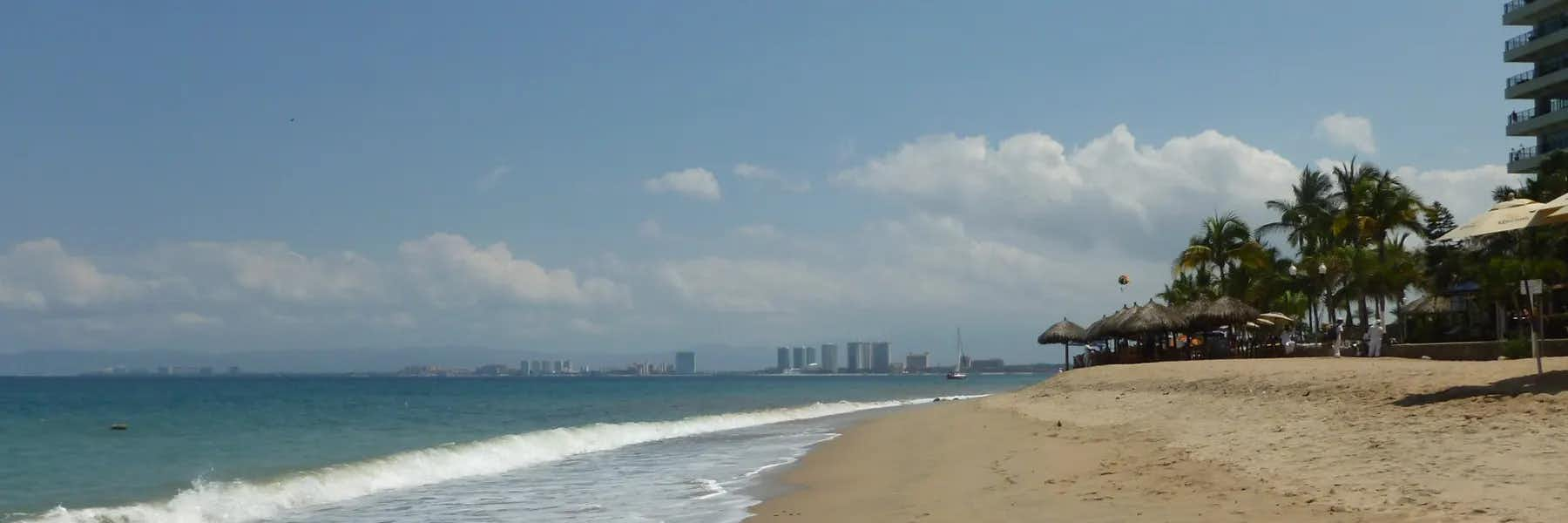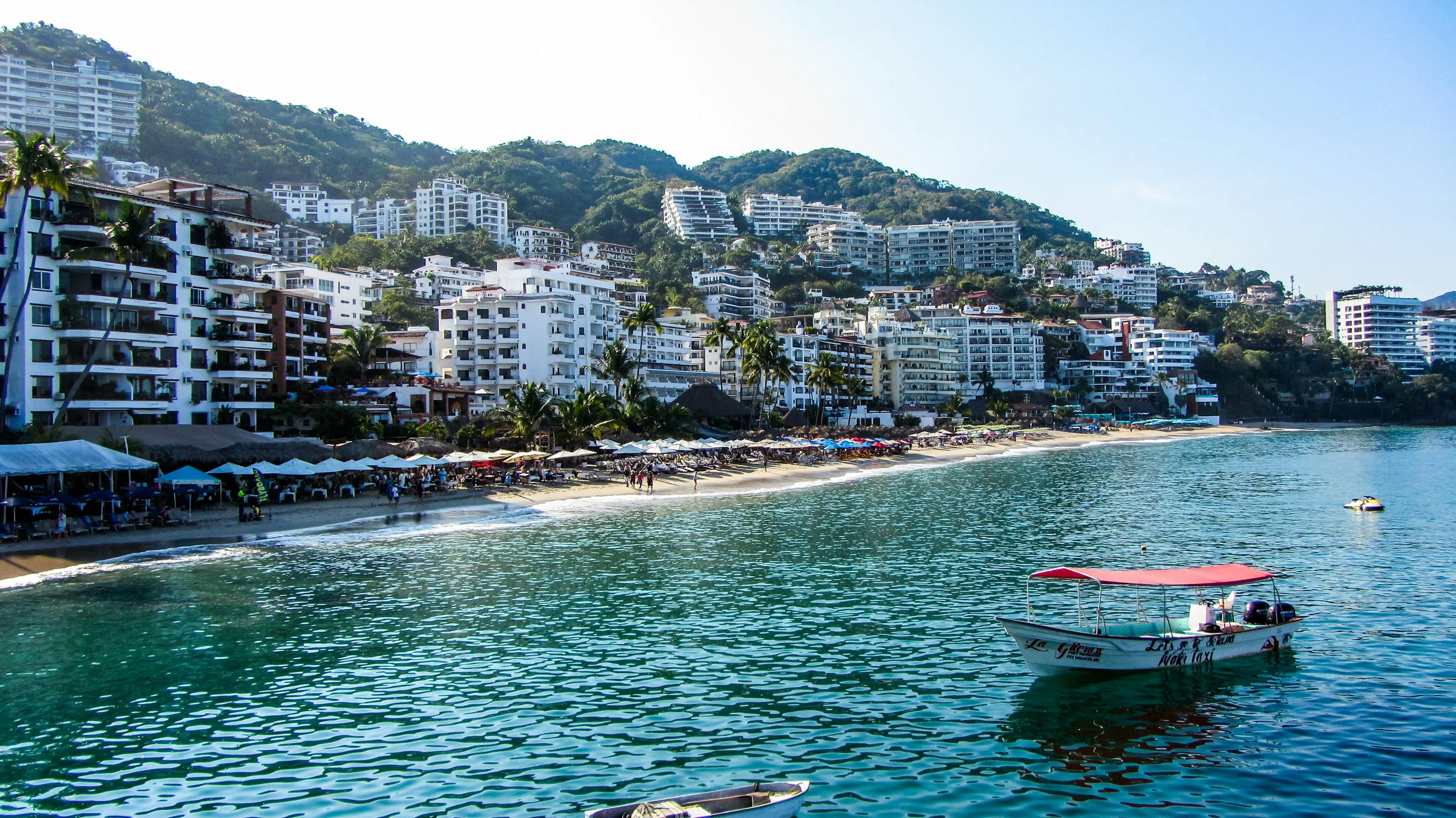At about three times the size of Texas, Mexico is blessed with a variety of climate and landscapes—and just as many different lifestyles.
As many as 1 million U.S. and Canadian citizens already call Mexico their home, with more joining them all the time. In terms of numbers, Mexico is the most popular expat destination for North Americans in the world.
Get Your Free Mexico Report Today!
Get Your Free Mexico Report Today!
Learn more about Mexico and other countries in our daily postcard e-letter. Simply enter your email address below and we’ll send you a free special report – Mexico: The Perfect Close-to-Home Retirement Haven.

By submitting your email address, you will receive a free subscription to IL Postcards and special offers from International Living and our affiliates. You can unsubscribe at any time, and we encourage you to read more about our Privacy Policy.
Here is a quick look at some of the best beach and mountain towns in Mexico.
3 Best Towns in Mexico for Beachside Living
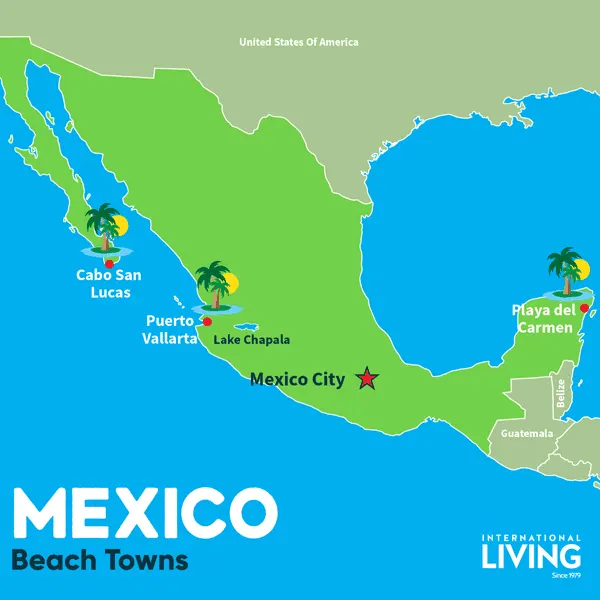
With 5,800 miles of coastline in Mexico, you can find traditional fishing villages, stunning beaches, busy resorts, and some of the world’s best scuba diving and sport fishing locations.
Puerto Vallarta
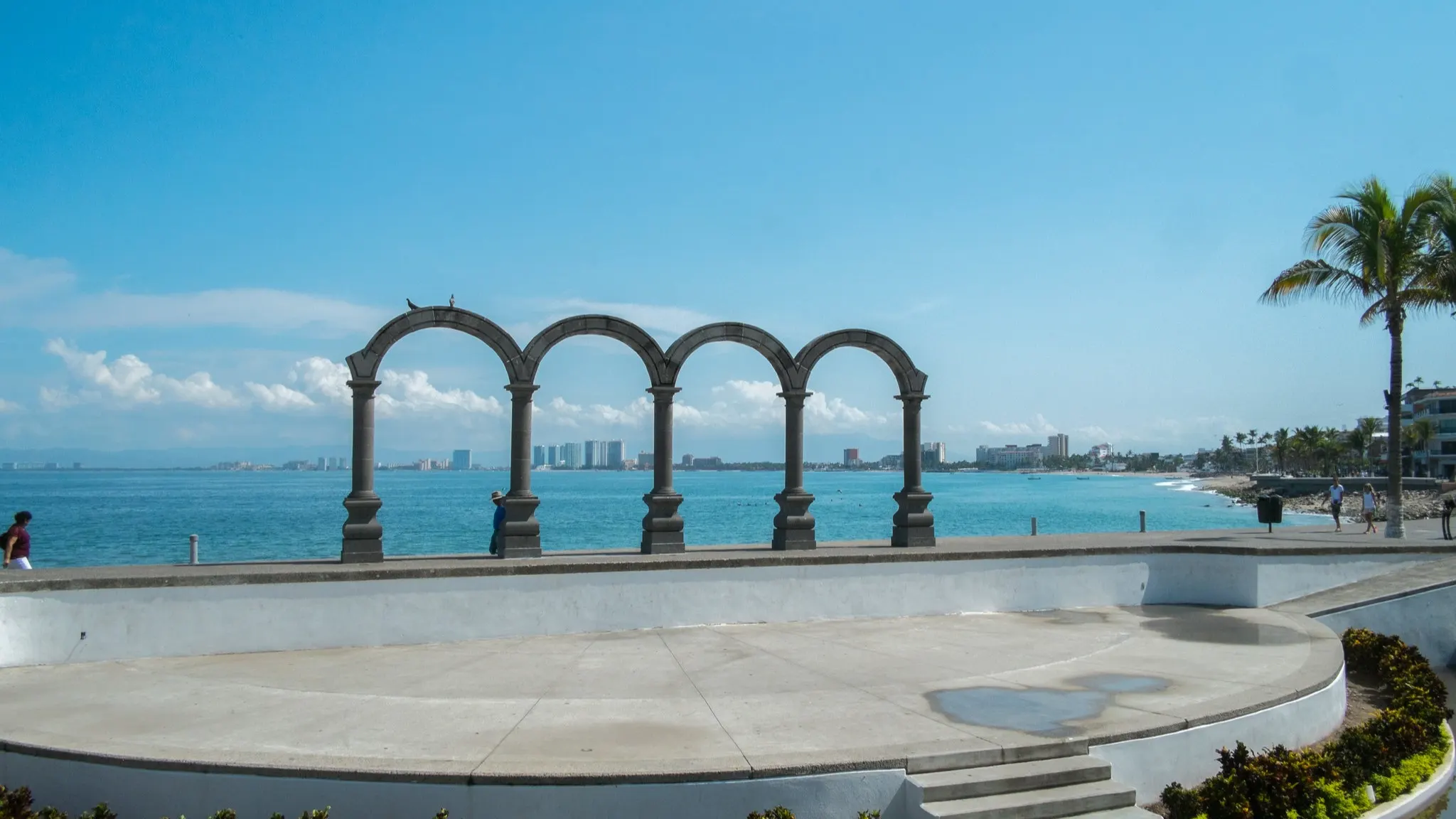
The jewel of Mexico’s Pacific coast, Puerto Vallarta is a glittering resort town that attracts visitors from around the world. The heart of the action is the historic center, known as the Zona Romantica. Here, narrow streets are home to shops, restaurants, and cafes. It’s walkable and you’re always bound to discover something new every time you turn a corner.
The foothills of the Sierra Madre Mountains start to rise very dramatically just a few blocks from the water. And the hillsides are linked with condos and luxury villas. Many expats enjoy panoramic ocean views from their balconies.
Puerto Vallarta (PV) is well-known for its live music and entertainment scene. It can be hot and humid here, although that is tempered somewhat by the sea breezes. The bustling beach and the cool Pacific waters offer the perfect way to cool off. Families and couples tend to stroll along the malecon, the seaside promenade, when it cools off in late afternoon and buy ice cream cones or other snack from one of the vendors.
Boating is a popular activity in Puerto Vallarta, with the Bay of Banderas as the ideal setting for a day on the water. There is a full-service marina to the north of downtown, as well as Licenciado Gustavo Díaz Ordaz International airport, top-notch medical clinics and hospitals, shopping malls, and other amenities.
Playa del Carmen
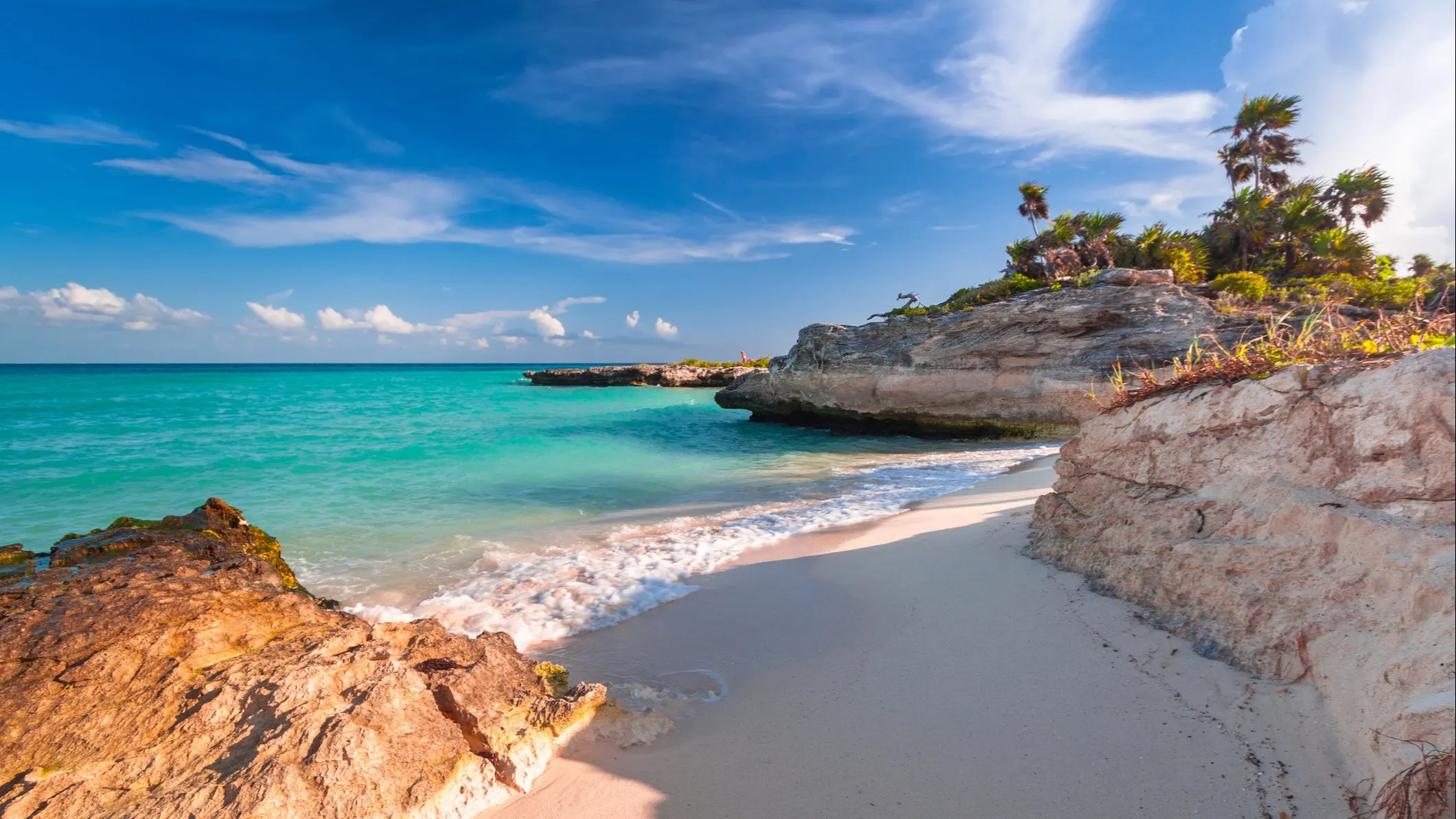
This former small fishing village has grown exponentially over the last couple of decades into a destination for vacationers from around the world. It’s on Mexico’s Caribbean coast, in the heart of the so-called Riviera Maya.
It has a sophisticated feel, especially along the miles-long pedestrian thoroughfare called La Avenida Quinta, or Fifth Avenue. It parallels the beach about a block inland and features a huge variety of restaurants, shops, nightclubs, and more.
The best beaches, with smaller crowds—are to the north and south of the downtown area and feature white sands and clear turquoise waters—great for swimming and snorkeling. Although in town you’ll find an active beach scene with restaurants and beach clubs right on the sand with pumping music, loungers and umbrellas for rent, waiter service, and more.
If you’re into scuba diving, the Mesoamerican Reef is just offshore, although an overnight trip to the nearby island of Cozumel might be in order as its closer to the best dive spots.
Playa, as locals call it, has also plenty of amenities for permanent residents, including multiple hospitals and medical clinics, large department and grocery stores, international schools, and more.
Cabo San Lucas
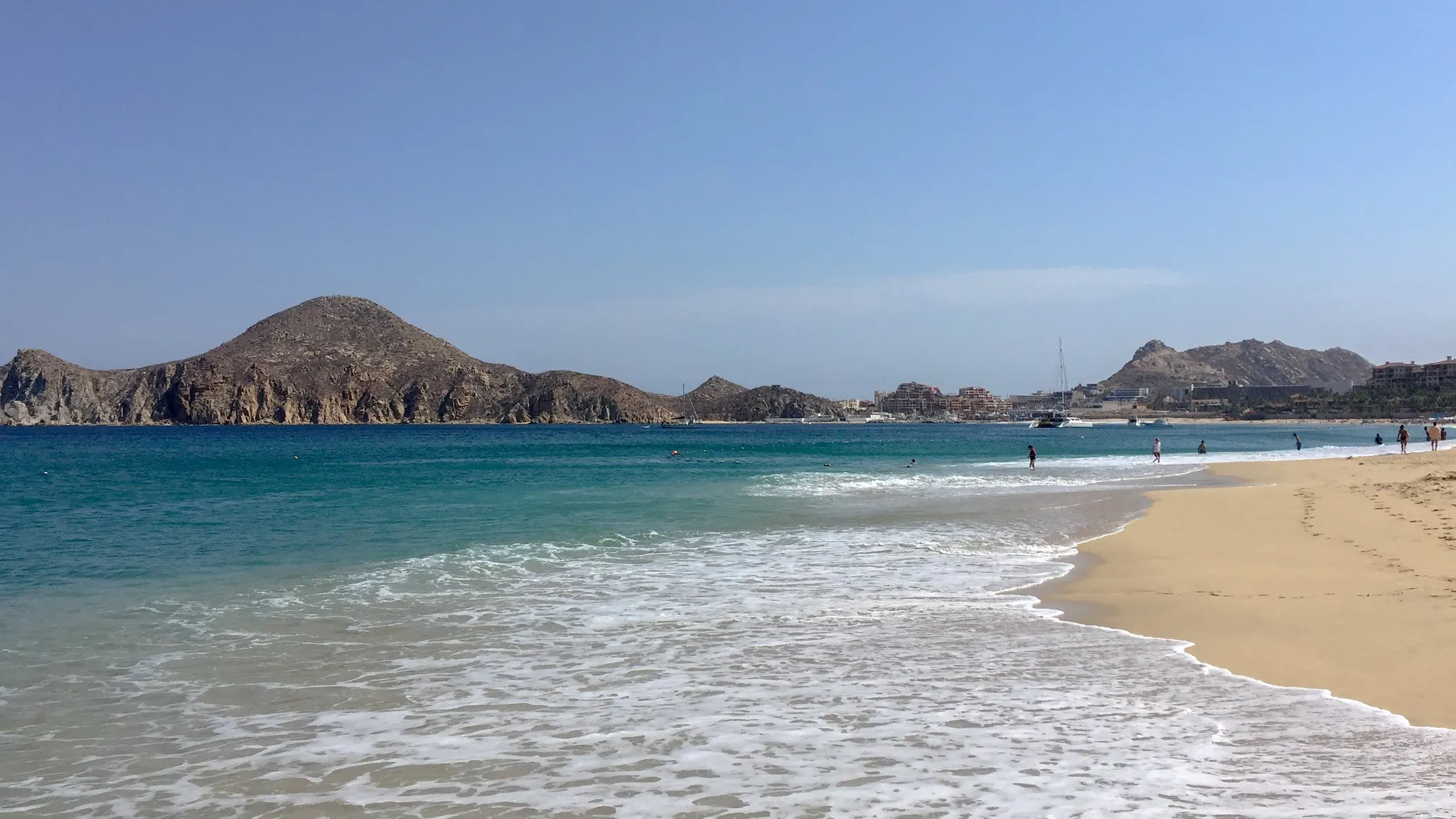
If you’re a boater or sport fisherman, this resort town on the far southern tip of the Baja California peninsula is the place to be. Its vast marina has slips for rent and is also home to a huge fleet of charter boats, from luxury options to simple open boats called pangas.
Record setting catches of swordfish, marlin, tuna, mahimahi, and more can be found just offshore. It’s a desert climate, with clear blue skies most days. With rain averaging only about 15 days throughout the year.
The marina is the heart of the town. And if you don’t fish, it’s still the place to go for entertainment, happy hour, restaurants, and shopping, which can be found lining the water all around the facility. Medano Beach is the place for swimming and watching the water from the shade of an umbrella.
Cabo, and this whole region is a well-developed area, with any modern conveniences you might need. About a 30-minute drive down the road is San Jose del Cabo, a more traditional Mexican town, with a pedestrian-friendly historic centro.
In between the two major urban areas is a highway, with condos and single-family home developments on either side, as well as time shares, hotels, and resorts. It’s extremely popular with vacationers and hosts many cruise ships throughout the year.
Get Your Free Mexico Report Today!
Get Your Free Mexico Report Today!
Learn more about Mexico and other countries in our daily postcard e-letter. Simply enter your email address below and we’ll send you a free special report – Mexico: The Perfect Close-to-Home Retirement Haven.

By submitting your email address, you will receive a free subscription to IL Postcards and special offers from International Living and our affiliates. You can unsubscribe at any time, and we encourage you to read more about our Privacy Policy.
3 Great Mountain Destinations in Mexico
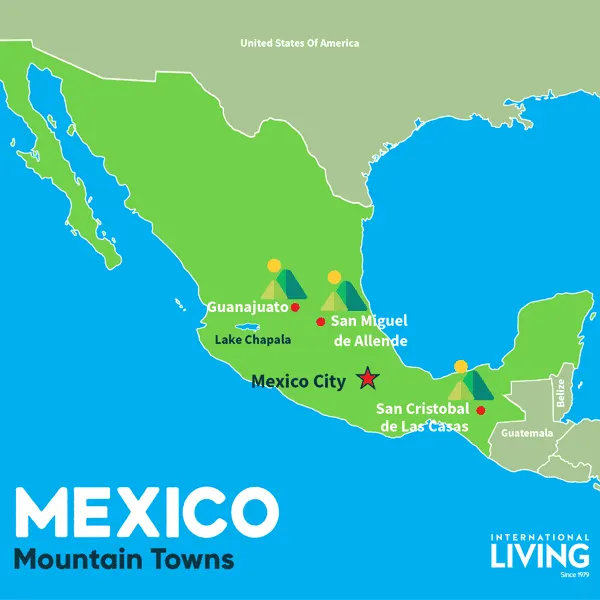
In the highlands, you’ll find a different Mexico, one of traditional festivals, picturesque and historic colonial cities, and stunning views of mountains and rolling hills. While it can be hot and humid at the beach, Mexico’s highlands towns are comfortable during the day and it cools off at night, so need for air conditioning.
San Miguel de Allende
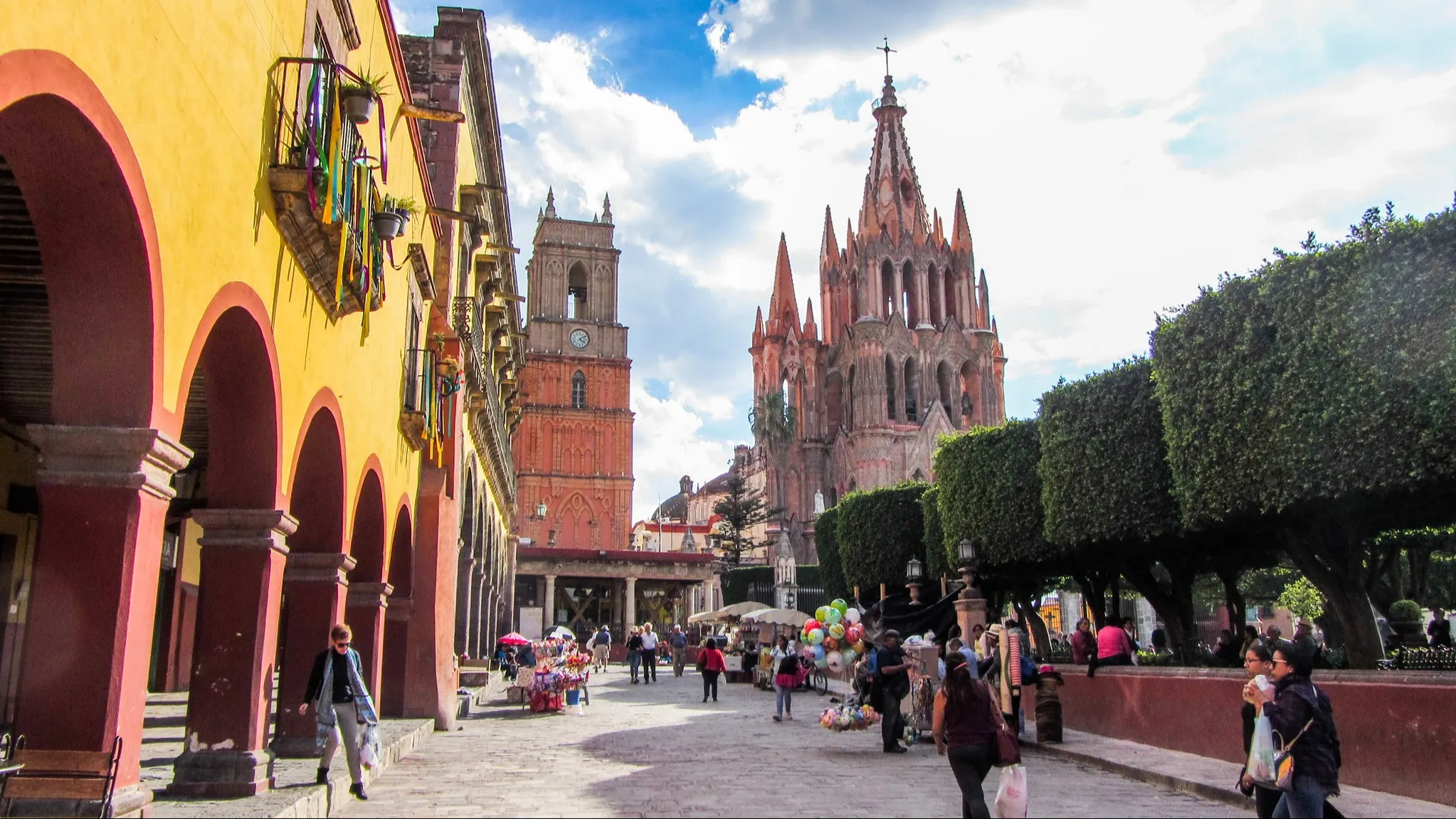
About four hour’s drive northwest of Mexico City, San Miguel de Allende is located in the Colonial Highlands region of central Mexico. Its well-preserved colonial architecture earned it UNESCO World Heritage status, and you feel like you’ve stepped back in time when you stroll its cobblestone streets.
It’s said that 10% of the population of roughly 70,000 is expat, mostly American and Canadian. That number swells during the winter months, as many part-time expat residents flee cold weather for sunny San Miguel.
They come for the temperate climate. Thanks to the elevation of 6,233 feet, daytime temperatures are in the 70s F most of the year, with nighttime temperatures in the 50s F. There’s also the great restaurant scene and the artsy and bohemian feel. It’s home to many working artists and artisans, local and expat. You can find their works in dozens of workshops, galleries, and arts and crafts markets spread throughout town. If you’re an artist yourself—or want to be one—you’ll find no shortage of classes to take.
As one of the cradles of Mexican independence and the Mexican revolution, San Miguel del Allende is also very popular with Mexican tourists, which gives the town a feeling of bustling energy. The Jardin, the main square, is full of street food carts, mariachis, and other activities most weekends.
San Cristobal de Las Casas
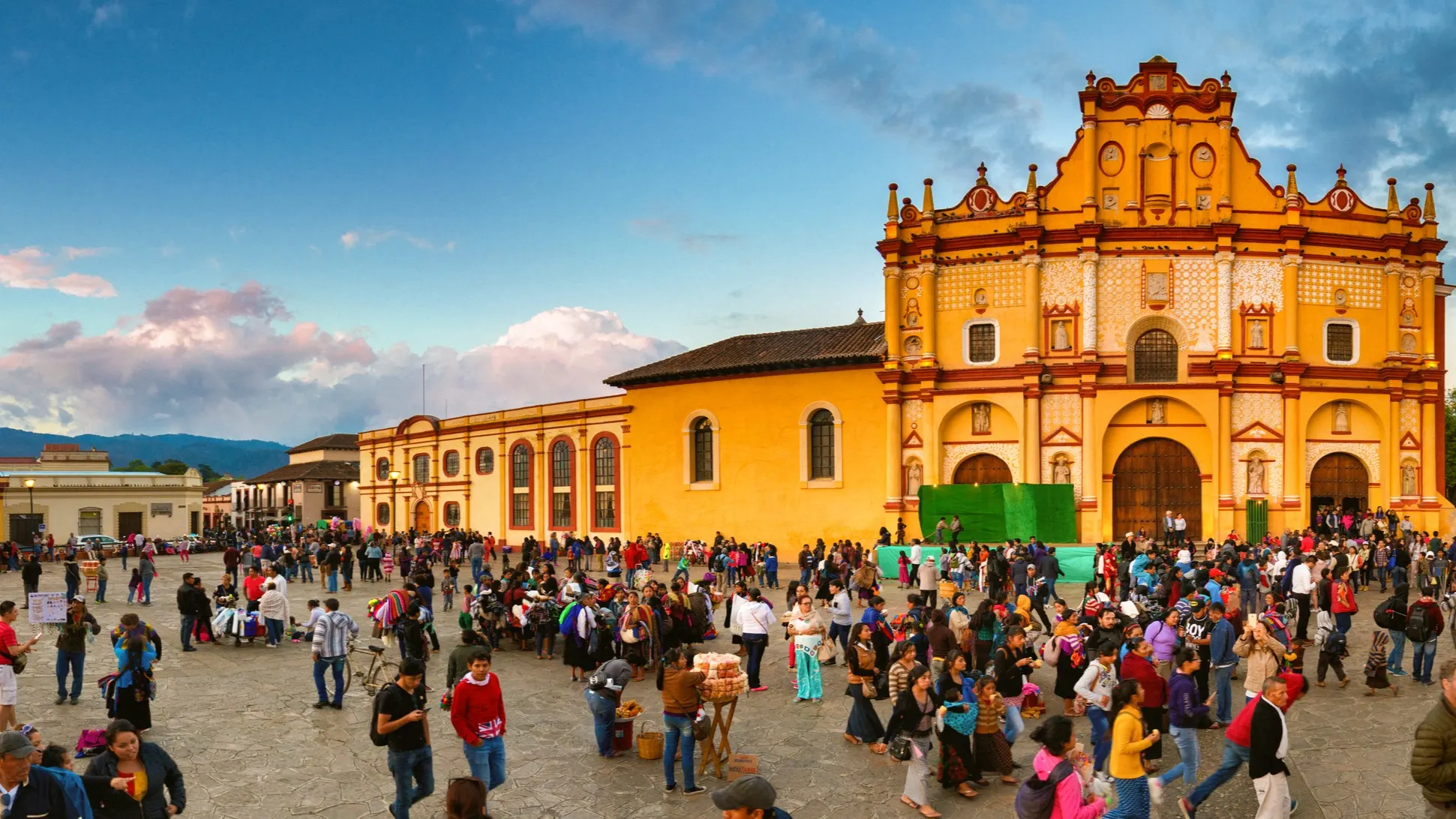
In the far south of Mexico, in the state of Chiapas, is the colonial town of San Cristobal de Las Casas. Nestled in a valley, surrounded by pine forest, pasture, and farmland,
This region is among those with the largest indigenous populations. Weavings and other textiles made by the local people are a must-have for any visitor. Amber found in this area is also highly prized and used in jewelry made locally and exported around the world.
Like many other highlands towns in Mexico, the historic centro of San Cristobal is well preserved, with neoclassical, baroque, and other architectural styles on display. Wrought iron balconies, intricate facades of churches, and cobblestone streets complete the look.
The main plaza, called the zocalo, is the center of activity in town, a gathering and meeting place for residents.
Increasing numbers of expats drawn by the charms of San Cristobal have made it their home, bringing a distinct foreign influence—although it hasn’t overpowered the local feel. The dining scene, for example, now features Thai, Italian, and more alongside traditional chalupas and tamales.
Like other highland towns in Mexico, it has a mild climate, averaging in the 60s F and 70s F during the day and dipping to the 40s F and 50s F at night.
Guanajuato
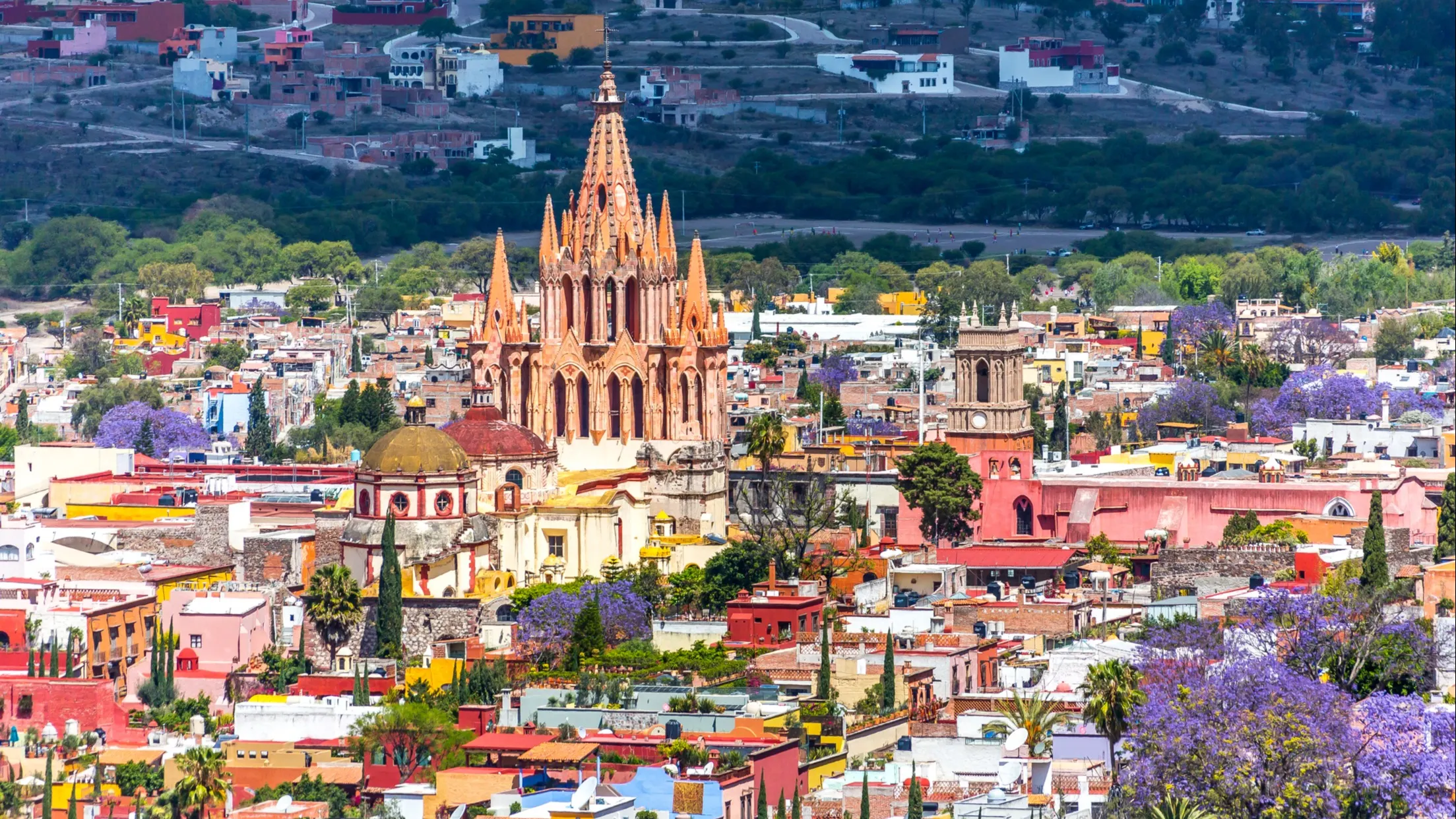
Lesser-known than nearby San Miguel de Allende and home to a much smaller expat population, Guanajuato is also part of the Colonial Highlands and has the same ideal temperate climate.
Guanajuato is a center for traditional Mexican culture, with plenty of civic and religious festivals and celebrations. It also a reputation for the arts, with the showcase Cervantino festival taking place every October, featuring musicians, theatre, performance artists, and more at venues around town.
Its historic downtown has earned it a designation as a UNESCO World Heritage site and features colonial architecture of grand civic buildings, cathedrals and churches, charming parks and plazas, and restored homes. The outskirts are modern. Set in a narrow valley, homes blanket the hillsides, accessed by steep narrow alleyways, called callejones, that are part stairway, part ramp. Walking shoes are essential here, as are taxi rides if you live up the hill, especially on the way home from the market.
Due to its small expat population, Guanajuato is perfect for those seeking a more authentic Mexican experience, and want to practice their Spanish. You’ll also find cheaper options for rentals and real estate to buy than expat favorite San Miguel de Allende. But it’s still a fun and convenient place to live—with all the modern services you might need.
Get Your Free Mexico Report Today!
Get Your Free Mexico Report Today!
Learn more about Mexico and other countries in our daily postcard e-letter. Simply enter your email address below and we’ll send you a free special report – Mexico: The Perfect Close-to-Home Retirement Haven.

By submitting your email address, you will receive a free subscription to IL Postcards and special offers from International Living and our affiliates. You can unsubscribe at any time, and we encourage you to read more about our Privacy Policy.
